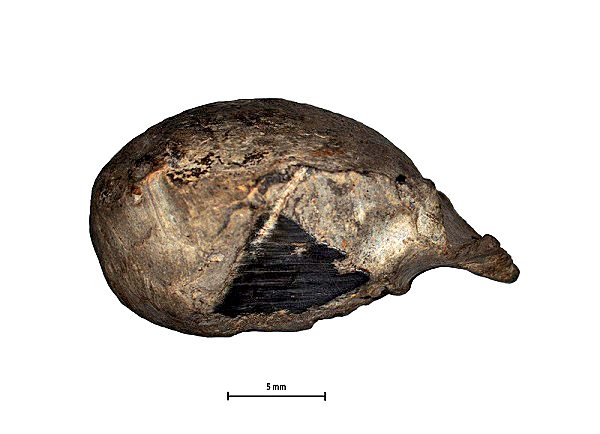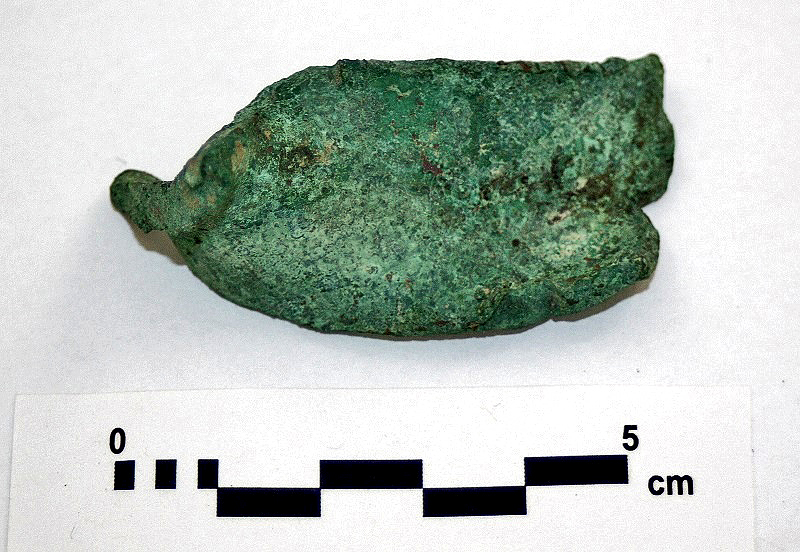In honour of 200th anniversary of the Battle of York, a battle that was fought on April 27th, 1813, we would like to share a few artifacts discovered at Fort York that are dated to the War of 1812.
[line]

This musket ball artifact was found during excavations for the Visitor’s Centre at the Fort York National Historic Site. It is associated with the Battle of York, that much is certain given its location, associated artifacts and stratigraphic position. Musket balls are made out of soft metal (lead), therefore they can become deformed easily and it can be determined if a musket ball was fired, impacted something, removed, etc, from the deformations that took place to it. The tear-drop shape of this musket ball is indicative of it hitting a soft target.
The weight of it is similar to musket balls used by the Americans in their Springfield muskets (roughly .69 calibre, smaller than the .75 calibre of the British “brown bess”). It could have also come from a French Charleyville musket and over 30,000 prepared French ball cartridges were stored at the Grand Magazine along with the English rounds. While it cannot be known whether this round was fired by the American forces or came out of the Grand Magazine as part of the explosion, its shape suggests a traumatic event upon impact.

In addition to the musket balls, cuprous barrel hoop fragments were also recovered during excavations. Copper does not spark and therefore it was used on military hardware to prevent accidental detonation. Approximately 30,000 pounds of gun powder was stored at the Grand Magazine when it was detonated by the retreating British/Canadian forces. Similar pieces were previously identified up to 200 m away from the site of the explosion. The Fort York Visitors Centre excavations are 260 m away.
ASI has also conducted excavations in the sourthernmost room of the South Soldiers’ Barracks building at the Fort York National Site. A total of 2,644 artifacts was recovered from this War of 1812 structure.









